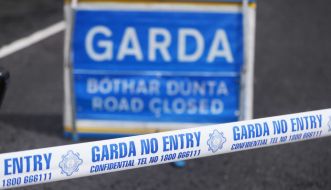The State has applied to overturn a judge's direction to acquit two men who were accused of the attempted murder of a Dublin teenager and have the Court of Appeal direct a retrial.
In March at the Central Criminal Court, Ms Justice Eileen Creedon directed a jury to find two men not guilty of the attempted murder of a teenager on Dublin’s southside in 2021.
The teenager gave evidence during the trial that he could not remember any events on the day in question before or after his shooting and that he was on medication at the time.
At the Court of Appeal on Thursday, Eilis Brennan SC, for the State, submitted that the trial judge erred in her ruling to direct the acquittals because she had considered the individual pieces of evidence “in isolation” in making her assessments, rather than considering their “global” consequences in a circumstantial case.
Ms Brennan told the three-judge appellate court that the trial judge had enough evidence for the case to go before a jury and that she had, in directing the acquittal, assumed the role of the jury, rather than that of a judge, in considering the evidence to be so weak against the two men.
Ms Brennan said she appreciated that the trial judge had a margin of discretion in directing the acquittal but said the judge had “unwittingly” taken up the jury’s role when isolating and assessing the “the factual evidence at its height, as the jury might have to”.
Evidence
Ms Brennan said the evidence at the trial consisted of CCTV, witness testimony and forensics and that there was “no inconsistency” in the prosecution’s evidence, which was “real, scientific and valuable”.
Ms Brennan said it was a matter for the jury to consider the “jigsaw” nature of the evidence in a circumstantial case of attempted murder.
Counsel said the trial judge considered the evidence “in a vacuum and not altogether”.
Ms Brennan said that forensics had revealed gunshot residue on clothes worn by the younger man, while CCTV footage of the movements of the older man on the day before the shooting and on the day itself showed him in the area of a Hyundai car, which was later found burned out and containing a Beretta pistol used in the shooting.
Ms Brennan said a taxi driver collecting the teenager from Eugene St on the night he was shot described the boy as being shot in his neck and upper body.
Counsel said that without medical attention the boy would have died and that other witnesses in the case heard someone at the scene say, “we got him” and “go on, finish him”.
Car burned out
Ms Brennan said it was the State’s case that the car used in the shooting, a Hyundai hatchback, was found burned out nearby “within two or three minutes” of the shooting.
Hugh Hartnett SC, for the younger man, said the State had to prove that the direction to acquit was “wrong in law” but had not established it to be so.
Mr Hartnett said that whether or not there was sufficient evidence to be put before a jury was a matter of law and not of fact, the latter of which was for a jury to decide on the credibility of the evidence.
“I submit there is no error,” said Mr Hartnett, who added that the court had both “function and discretion” to assess the evidence before it was put before the jury for deliberation.
Mr Hartnett said there were “gaps” in CCTV evidence the State exhibited when claiming to track two vehicles on the night of the shooting around the M50 near Finglas and at the scene at Eugene Street.
“She had to examine two weeks’ evidence, the CCTV, and was within her right to form a factual conclusion, and in doing so she formed a view [of acquittal]. I say this court is not entitled to interfere with that,” said Mr Hartnett.
Mr Hartnett said Ms Justice Creedon had considered all evidence in the case “globally” before removing the case from the jury.
“She was entirely justified although it may be a borderline case,” said Mr Hartnett.
Garret Baker SC, for the older man, said the trial judge was “highly experienced” in circumstantial cases.
“Ms Justice Creedon did say she was looking at the evidence from the height of the prosecution case and therefore, that means looking at the various strands in that combined way,” said Mr Baker.
“The reason it is a circumstantial case is that there is a gaping, black void in the case and there is simply no evidence that helps the prosecution at the location and therefore they have to look at indirect evidence,” said Mr Baker.
Witnesses
Mr Baker said two witnesses identified two men at the scene as being no older than 20 years of age but that his client on the night was aged “two months shy of his thirtieth birthday”.
“Context is key because it was always the prosecution’s case that my client was not the shooter,” said counsel, who noted that the trial judge adjourned the matter overnight for a ruling to be prepared.
“I am not aware of any case in which Ms Justice Creedon has given a directed not guilty verdict. She did not rush into this. She recognised it was an exceptional measure and that it should be used sparingly. I think she was right to do so,” said Mr Baker.
Both men's appeals continue on Friday in front of Court of Appeal president Mr Justice George Birmingham, Mr Justice Patrick McCarthy and Ms Justice Tara Burns.
Ms Justice Creedon ruled on an application from the defence to drop the charges against both men, who had been accused of the attempted murder of a then 17-year-old boy at a residential estate in southside Dublin at around 10.55pm on the night of February 24th 2021.
The men, aged 32 and 28, had both been accused of the attempted murder of the teenager at Eugene Street, Dublin 8, and of possession of a firearm, a Beretta pistol, with intent to endanger life on that date.
The younger man had also been accused of criminal damage to a home on Eugene Street on the same night, where a bullet passed through the front door, an internal wall and smashed through the glass of an oven cooker.
Both men had pleaded not guilty to all charges.
Trial
At the trial in March, Mr Baker and Mr Hartnett had submitted that the evidence against their clients was so "tenuous, inconsistent or vague" that the links in the circumstantial case made by the prosecution were not strong enough for the jury to infer guilt.
Ms Justice Creedon found that a gun found in a burned-out Hyundai after the shooting could not be linked to either man.
She said that while gloves worn by the younger man had firearms residue on them, it could not be found that they directly link him to being the actual shooter in the case, only that it was likely they had been worn during the discharge of a firearm.
The movements of two cars on the night, the burned-out Hyundai and a black BMW could not be directly linked to the two men in terms of procurement but only to another individual not before the court through a phone number used in the purchases of both, she said.
Ms Justice Creedon said that there was no direct evidence identifying either defendant at the scene in a case where eyewitnesses could only say they saw two youths or young men running from the scene on Eugene Street on the night.
While CCTV of the movements of the vehicles had been played to the jury over three days of the trial, no footage of the shooting at Eugene Street had been produced by the prosecution.
The judge said there had been no phone evidence, DNA evidence, social media evidence or evidence of motive in the case.
Ms Justice Creedon said the withdrawal of the case from the jury should only be "an exceptional measure for the purpose of avoiding a manifest risk of an unfair trial or wrongful conviction".
Ms Justice Creedon said that the case had been a circumstantial one in which the prosecution alleged "joint enterprise" on behalf of the two defendants.
The Judge said the case against both did not involve direct evidence but inferences that the two men acted with intent to commit a criminal act.
"Having considered the evidence of the specific charges before the court and the arguments, the court is satisfied that it is not properly open to the jury to reach the inference contended by the prosecution. Accordingly, the court accedes to the application on behalf of both accused to withdraw all charges from the jury," said the judge.
The trial was in its 11th day of hearing when the not guilty verdict was directed.







